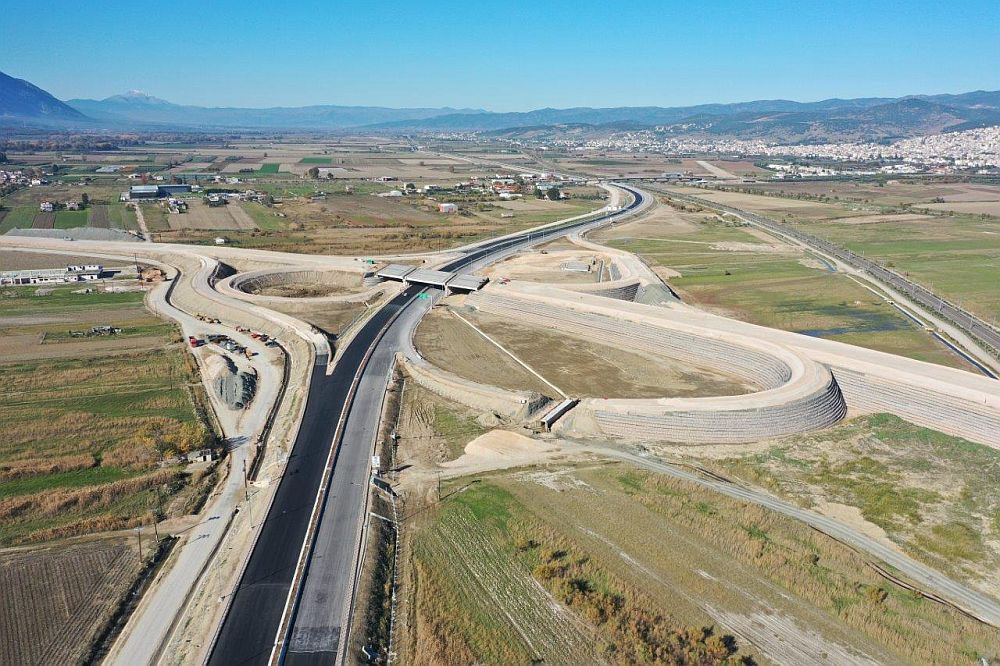The ghost project for the Ioannina-Kakavia road axis is in a quagmire. Perhaps we are talking about the case of one of the most troubled projects that can not find its way to implementation. It did not manage to join the initial planning of the Ionian Road, then it was excluded from the NSRF 2007-2013 and the NSRF 2014-2020 and it failed to enter the projects of the Recovery Fund.
The institutions of Epirus complain today that their Region is perhaps the only one without major projects, lagging behind in development compared to others that are filled with projects. They also note that Ioannina-Kakavia is part of a Trans-European axis and that it is a critical project for the connection of Epirus and the country with the Western Balkans and the famous axis of the Adriatic Road.
The problem that has been blocking the way of the implementation of this great project for years is the flows. From 2014-2015 onwards, the rules for financing road projects from the NSRF changed manually for the country, and it is no coincidence that all the projects that passed, needed exhaustive negotiation with the Commission.
Let us recall the case of Patras-Pyrgos, the southern and northern part of E65 etc. Ioannina-Kakavia faces the same problem. The flows of the road leading to Albania are not enough to finance the construction of a highway, similar to the one that exists from Antirrio to Ioannina.
Is the return of the project to the Ministry of Infrastructure a solution?
Sources with knowledge on the subject note that such a large project will have to move to the level of central government in order to find the way to implementation. The return of the project to the Ministry of Infrastructure with a simultaneous effort to find a viable solution could send the project that the people of Epirus are eagerly requesting to an implementation path.
The options available for the project should also be considered. Ioannina-Kakavia currently has a cost of over 400 million euros and this creates huge funding needs. To be carried out as a concession project, large private funds are required which also conflict with its viability. In order to be financed by the NSRF 2021-2027, it is clear that its characteristics will have to be reduced.
According to sources who are well aware of the issue, one solution would be to become an express-way axis, i.e. a fast traffic road that would give it a chance to be implemented. A corresponding road is Kalamata-Pylos-Methoni which is in a PPP tender. Here we move on to the next option which is if the road characteristics are reduced. A selection of a PPP project could provide a solution to the axis and send it for construction.
An “orphan” project
The problem with Ioannina-Kakavia is that it “ran out”. It was not built at the right time and now it is an “orphan project” trying to find a foothold. Certainly what needs to be considered is a long-term viable solution that will increase the chances of the project moving forward.
It is also noteworthy that there is now an answer from the Commission to a question of the MEP of N.D. Ms. Vozenberg, who states that the Ioannina-Kakavia section is part of a trans-European axis and should be completed by 2030. Of course, this does not commit to a closed highway construction but gives a boost to consider all the possibilities of the project.
For the solution of the NSRF and the construction as a public project is another option but perhaps the most difficult because the funding from Brussels will have to be approved and there we may have another repetition of the negotiations that lasted two or even three years. In any case, Ioannina-Kakavia still has a road ahead of it until we see it finally get the green light and be implemented.
ΜΗΝ ΞΕΧΑΣΕΤΕ
- Ακολουθήστε το ypodomes.com στο Google News και μάθετε πρώτοι όλες τις ειδήσεις για τις υποδομές στην Ελλάδα
- Δείτε την εταιρική μας σελίδα στο LinkedIn
- Εγγραφείτε στο Newsletter μας, για να λαμβάνετε κάθε εβδομάδα στο email σας τα δημοφιλή άρθρα μας
